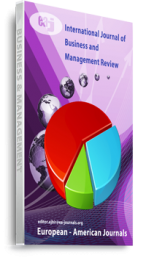This study investigated the effect of the naira free fall on manufacturing sector capacity utilization in Nigeria from 1990 to 2023, while controlling for import volume index (IVI) and labour force (LF). Capacity utilization is widely regarded as a key measure of industrial efficiency, yet Nigeria’s manufacturing sector has consistently operated below international benchmarks, with persistent fluctuations largely linked to exchange rate volatility. The study employed an ex-post facto research design using secondary data obtained from the Central Bank of Nigeria and the World Bank Database. The Autoregressive Distributed Lag (ARDL) model was applied to capture both short-run and long-run dynamics among the variables. Naira free fall was proxied by official exchange rate, import volume index and labour force, while capacity utilization was proxied by average manufacturing capacity utilization rate (AMCUR) The findings showed that the official exchange rate (EXRATE) exerts a positive and statistically significant long-run effect on AMCUR, with a coefficient of 0.1043 and (p = 0.0234). This implies that naira depreciation enhances competitiveness by encouraging local consumption of domestic goods. In contrast, the import volume index (IVI) and labour force (LF) were found to be statistically insignificant, (p=0.3092, 0.9483) despite their positive and negative coefficients (0.034297, -1.423446) respectively, suggesting that fluctuations in imports and workforce size did not play a meaningful role in shaping capacity utilization during the study period. The error correction term (-0.8899, p < 0.01) confirmed a strong adjustment mechanism, with about 89% of deviations from equilibrium corrected annually. With an adjusted R² of 0.66, the model demonstrated good explanatory power. The study concludes that while exchange rate remains the dominant driver of manufacturing capacity utilization, policy measures aimed at stabilizing the currency must be complemented by broader industrial reforms such as infrastructural development, credit access, and local raw material sourcing to sustain higher utilization rates. The study contributes to literature by providing fresh evidence on how exchange rate, imports, and labour dynamics jointly shape manufacturing performance in Nigeria.
Keywords: Capacity Utilization, Manufacturing sector, Nigeria, ardl model, import volume index, labour force

